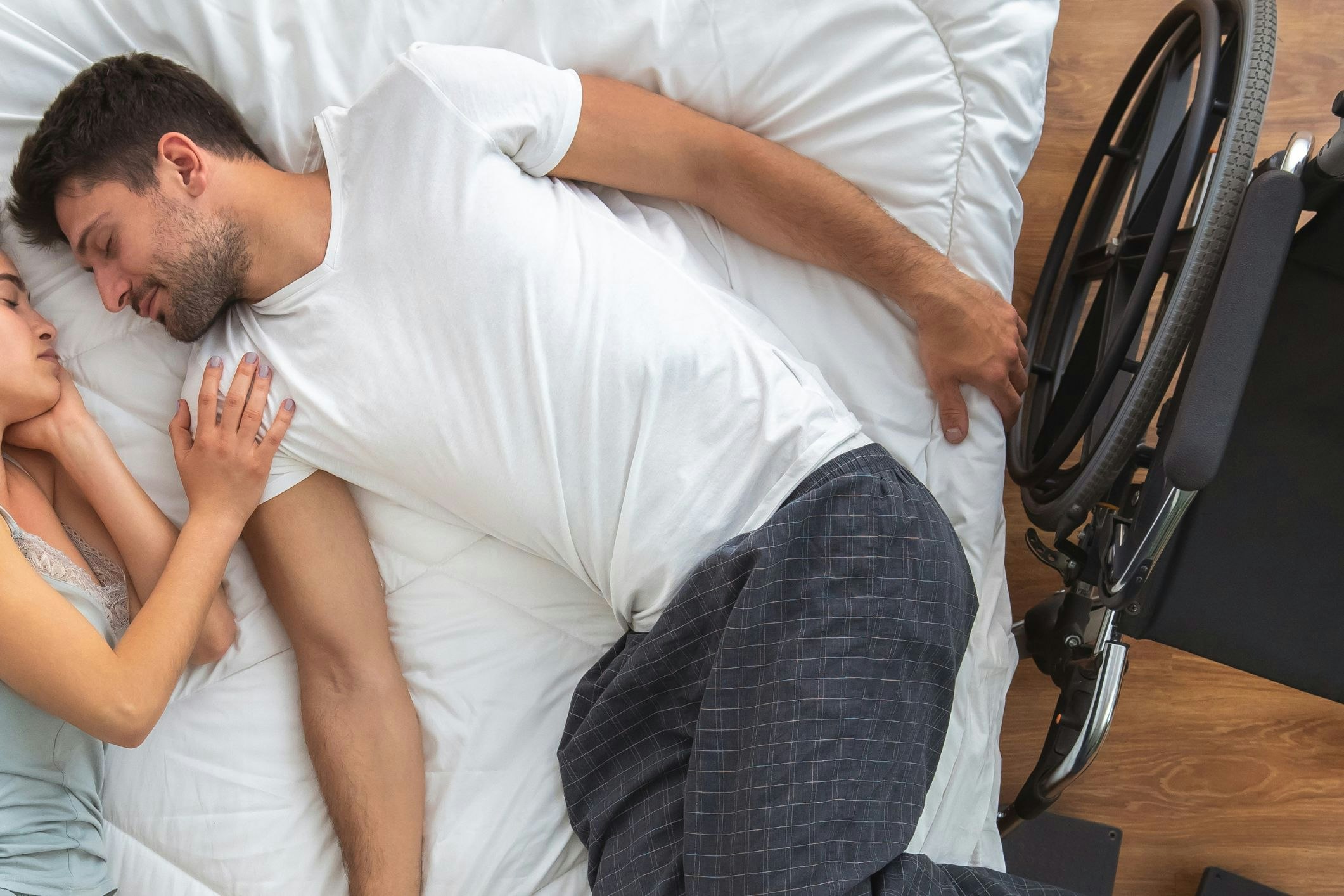Sexual dysfunction and disability

It happens to the best of us…
Key points:
- Erectile dysfunction is very common in older Australian men, affecting up to two in three males over the age of 45
- Although sexual dysfunction is commonly associated with erectile dysfunction, women with disability may also experience issues that complicate ‘the birds and the bees’
- There are many physiological, neurological and psychogenic causes or contributing factors which may explain sexual dysfunction
This edition of Disability Support Guide covers the causes, types, prevalence and conditions commonly associated with sexual dysfunction. As people get older, the likelihood of sexual dysfunction increases, however, signs of dysfunction may arise at any age.
Sexual dysfunction is not to be confused with asexuality or a lack of interest in sexual intercourse, which is the absence of sexuality. Instead, a person may experience sexual dysfunction when attempting to achieve or maintain a level of physical arousal for the purpose of physical engagement.
Types of sexual dysfunction
There are many different types of sexual dysfunction that people with or without disability may experience throughout life, such as:
- Erectile dysfunction — an inability to attain or maintain an erection
- Female sexual arousal disorder — an inability to attain and maintain adequate levels of lubrication or swelling
- Neurological dysfunction — damage to the nervous system which may prevent sexual intercourse or processing arousal
- Medication — an inability to experience arousal or a diminished libido as a side effect of medication, such as an antidepressant or anti-anxiety medication
- Psychogenic — anxiety, apathy toward or traumatic association with sexual activity preventing sexual function
- Physiological dysfunction — hormonal, structural or impractical dysfunction
Causes of sexual dysfunction
Erectile dysfunction is a common part of the ageing process, with a variety of possible causes, such as:
- High blood pressure
- Parkinson’s disease
- Prostate disease
- Hormonal changes
- Medication side effects
- Psychosocial factors
Female sexual arousal disorder may be influenced by personal beliefs, feelings or interpersonal relationships, in addition to:
- Menopausal or post-menopausal reductions in estrogen levels
- Atrophic vaginitis
- Diabetes mellitus
- Radiotherapy of the pelvis
Neurological sexual dysfunction may be caused by:
- Acquired brain injury
- Brainstem — decreased libido, inappropriate processing of information
- Hypothalamus — general initiation, dyscontrol of sexual behaviour, hormonal regulation
- Frontal lobes — sexual apathy, loss of initiative
- Pituitary gland — infertility, decreased secondary sex characteristics, decreased libido
- Septum — decreased libido, impotence, decreased ability to experience pleasure/orgasm
- Spinal cord injury
- Incontinence
- Dementia
- Epilepsy
- Multiple sclerosis
- Parkinson’s disease
Prevalence
National data collected from an Australian telephone survey revealed that sexual dysfunction impacted the majority of male and female respondents:
- 55 percent of Australian men and 60.5 percent of Australian women reported at least one instance of sexual dysfunction within the year preceding data collection
- Severe cases of sexual dysfunction — defined as three or more symptoms — were more common in women than male respondents
- 13.2 percent of men and 19.7 percent of women reported severe sexual dysfunction within the previous year
Conditions associated with sexual dysfunction
Schizophrenia
New research, published in JAMA Psychiatry on September 13, 2023, suggests that over 55 percent of men and 60 percent of women with schizophrenia suffer sexual dysfunction worldwide.
Researchers assessed the global rate of sexual dysfunction in people with schizophrenia and schizoaffective disorder, which is diagnosed based on co-morbid bipolar and schizophrenia diagnoses.
Interestingly, instances and severity of sexual dysfunction in participants with schizophrenia were greater than in those with schizoaffective disorder who were treated with antidepressant medication. This research may indicate that antidepressant medication could be used to effectively treat sexual dysfunction in people with schizophrenia.
Parkinson’s disease
Movement is carried out in the brain through dopamine, known as the ‘reward’ chemical, which signals how we move, act and react to encourage the best possible outcome. In people with the condition, the parts of their brain that create dopamine start to die out, meaning that, among issues with mood, sleep and digestion — the body doesn’t know how to move, despite the person themselves knowing how they wish to move.
Due to dopamine influencing ‘reward,’ drive and happiness, the progressive disease may lead to a diminished libido over time.
Research on the topic found erectile dysfunction is the most common sex-based complaint among males with PD, with a prevalence of 79 percent — whereas 87 percent of female patients with PD reported sexual dysfunction, with the most common complaint being a loss of libido.
Depression
A newly published study found that prevalence rates of sexual dysfunction in psychiatric disorders were:
- 45 to 93 percent for depressive disorders
- 33 to 75 percent for anxiety disorders
- 25 to 81 percent for OCD
The most affected phase of the sexual response cycle was sexual desire, in both men and women with depressive disorders.
Additional research is needed to establish the rate of co-morbidity between depression, diabetes and erectile dysfunction, following a recent study. The data, published in Preventive Medicine, that revealed 75 percent of patients developed prediabetes/diabetes within a year of erectile dysfunction diagnosis
Feel like we missed something? Let the team at Disability Support Guide know what you’d like to see added to the article. Alternatively, get in touch and tell us what kind of content you’d like to see in the next Talking Disability newsletter.